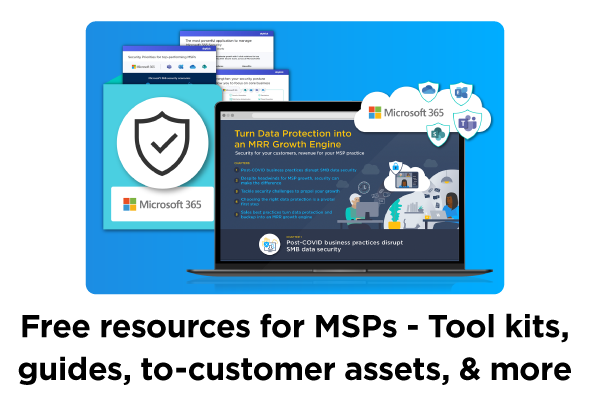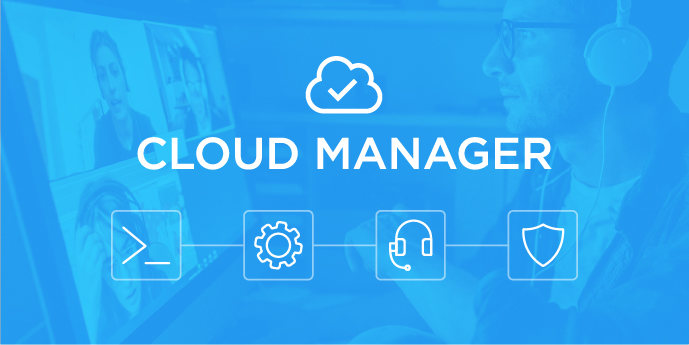How SkyKick helps improve customer experience, margins and security in your cloud operations
SMBs are continuing to accelerate their adoption of Microsoft 365 and other SaaS applications in the cloud. While this is great news for their business productivity, it can present challenges for the IT Providers that advise and support these businesses’ technology solutions. Therefore, many are in search of new ways to address the operational complexity and cost burden that comes with the speed, scale, and breadth of the cloud.
SkyKick Cloud Manager is a new automation platform – built for the way Managed Service Providers (MSPs) work. In this article, we’ll share ten ways that MSPs can leverage this platform to reduce this complexity and scale their cloud operations with improved IT automation, more efficient Help Desk performance, and strengthened security.

FREE trial of Cloud Manager.
Login to the SkyKick Partner Portal and activate your trial today.
Top 10 ways to transform your business
1. Streamline multi-customer management
SkyKick Cloud Manager was purpose-built for MSPs to seamlessly manage across customer tenants. Persistent, pre-authenticated connections to customer tenants and devices make it easy to switch between customers, tenants, apps, or devices without needing to enter customer credentials. Help Desk technicians can easily move from customer ticket to customer ticket using pre-published automation available in the Actions Panel. Or, if using the built-in Console, senior engineers and escalation specialists can easily switch between customers or run single commands across all customers.
2. Integrate and simplify cloud, on-premises and hybrid management
Cloud Manager provides the ability to connect to and manage devices within a single interface to enable coordinated administration of devices used in hybrid environments. Cloud Manager utilizes a lightweight agent and the Microsoft IoT hub to establish a secure connection between Cloud Manager and connected devices. This connection provides an index of the supported PowerShell commands on the device and enables the execution of commands to both make changes on that device and immediately sync those changes to the cloud – all from within a centralized interface.
3. Extend automation to easily manage Microsoft 365, Saas and beyond
In addition to multi-customer and hybrid management, Cloud Manager makes it possible for you to use the scripting language you already know to write PowerShell script automation to manage Office 365 and a growing number of non-Microsoft SaaS applications. This obviates the need to learn numerous proprietary SaaS APIs for basic MSP service actions like onboarding, user management, permission resets etc. This capability can be used to both improve and expand SaaS support services.
4. Use an IDE with support to write better automation, faster
Build, save, share, and publish PowerShell automation within an integrated development environment that ensures efficient creation and customization of scripts with error highlighting, predictive auto completion, and more. But beyond a standard IDE, the Workbench editor is built for organizational collaboration and reuse. Rather than each engineer working separately which can lead to redundant work and less standardization, this IDE provides a central environment where engineers can share, reuse, learn from each other, and build upon each other’s automation to improve the efficiency, quality, and consistency of automation. What’s more, with a built-in form generator, parameters are automatically converted into easy-to-complete form fields to safely put automation into the hands of the Help Desk team.
5. Get a head-start and build on thousands of out-of-the-box templates
Cloud Manager comes with an extensive inventory of proven commands, including standard Microsoft cmdlets, SkyKick-authored commands for non-Microsoft SaaS applications, and SkyKick-authored sample commands across a range of management scenarios, from creating and managing Microsoft Teams to identifying security risks or simply resetting a password. Whether building upon your own proprietary scripts or the thousands of built-in commands, it’s easy to create and customize scripts that can be repurposed over time.
6. Scale safely by publishing automation to the Help Desk
Cloud Manager enables engineers to publish simple-to-complex PowerShell scripts to the Help Desk where they can be safely, efficiently and consistently executed through an easy-to-use GUI without needing any PowerShell skills. This empowers the Help Desk to resolve tickets right the first time, every time. From onboarding users to managing permissions to group and bulk changes to license management and beyond there are no checklists to find or follow and no need to know the nuances of each customer or application.
7. Minimize costly errors and escalation, focus on value-generating work
Streamline engineer time escalations that occur by providing the context, resources, and resolution tools, all within the same application. And with frontline Help Desk resolving most tickets, senior engineers can focus on revenue-generating projects and proactive service improvements instead of reactive support or resolving escalations. The results include lower support costs, higher customer value, and the potential to expand service offerings.
8. Improve security and performance with a full audit trail
Whether initiated in the GUI-based Actions Panel by the frontline Help Desk or the built-in PowerShell Console, every action that occurs in Cloud Manager is automatically recorded. View all actions performed in real-time in the Activity log, including who ran the command, what actions were performed, where the command was initiated, when it started and finished, and the result, including access to the PowerShell output. With visibility into how automation is being used, you can identify opportunities to build new automation that fills critical gaps or make improvements to existing IP for continuous optimization.
9. Increase security of shared client passwords
Cloud Manager helps you improve the security of both you and your customers by eliminating the risks associated with shared credentials and excessive logging in and out of tenants. Cloud Manager maintains secure, persistent connections to the tenants and devices you manage, so you never need to re-authenticate as you switch between customers, tenants, apps, or devices.
10. Proactively manage security and enforce compliance policies
Multi-tenant management capabilities make it easy to identify compliance gaps and enforce security policies in bulk. Cloud Manager includes ready-to-use automation to support security management, including bulk discovery of MFA status and enablement of MFA across tenants and more.
Start your free trial of Cloud Manager
For a limited time, SkyKick is offering a free trial of Cloud Manager. Simply login to the SkyKick Partner Portal and activate your trial to get started.



